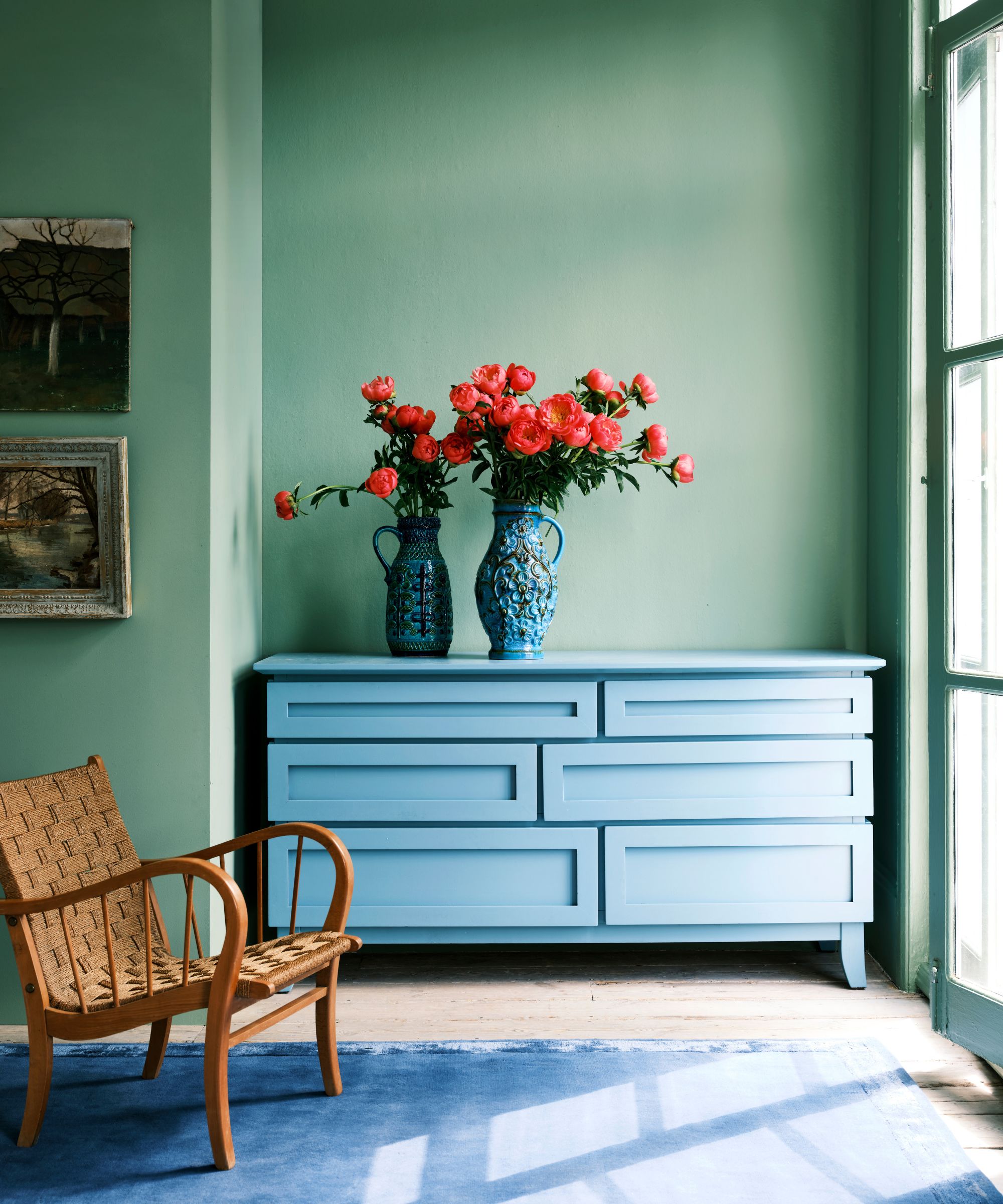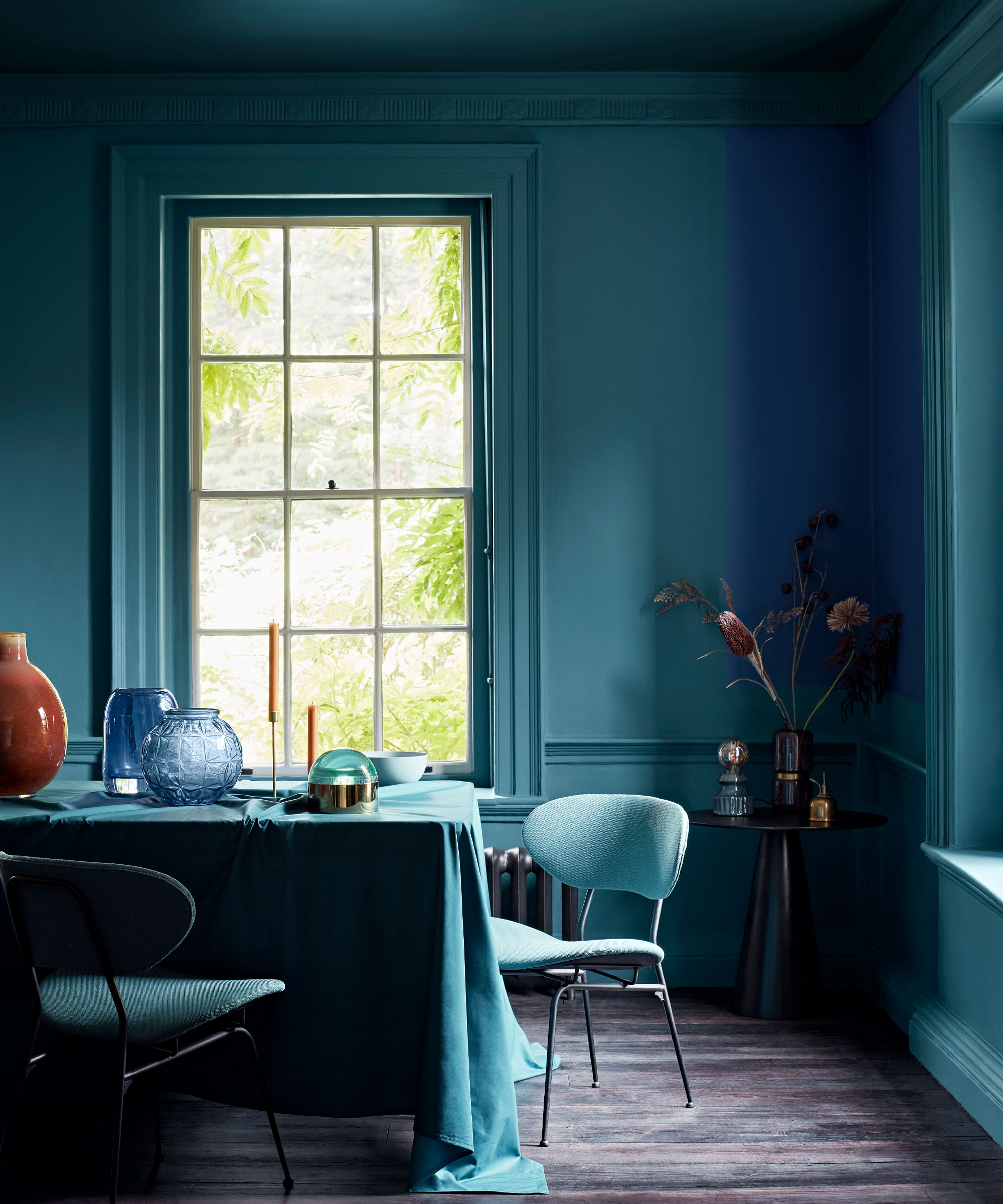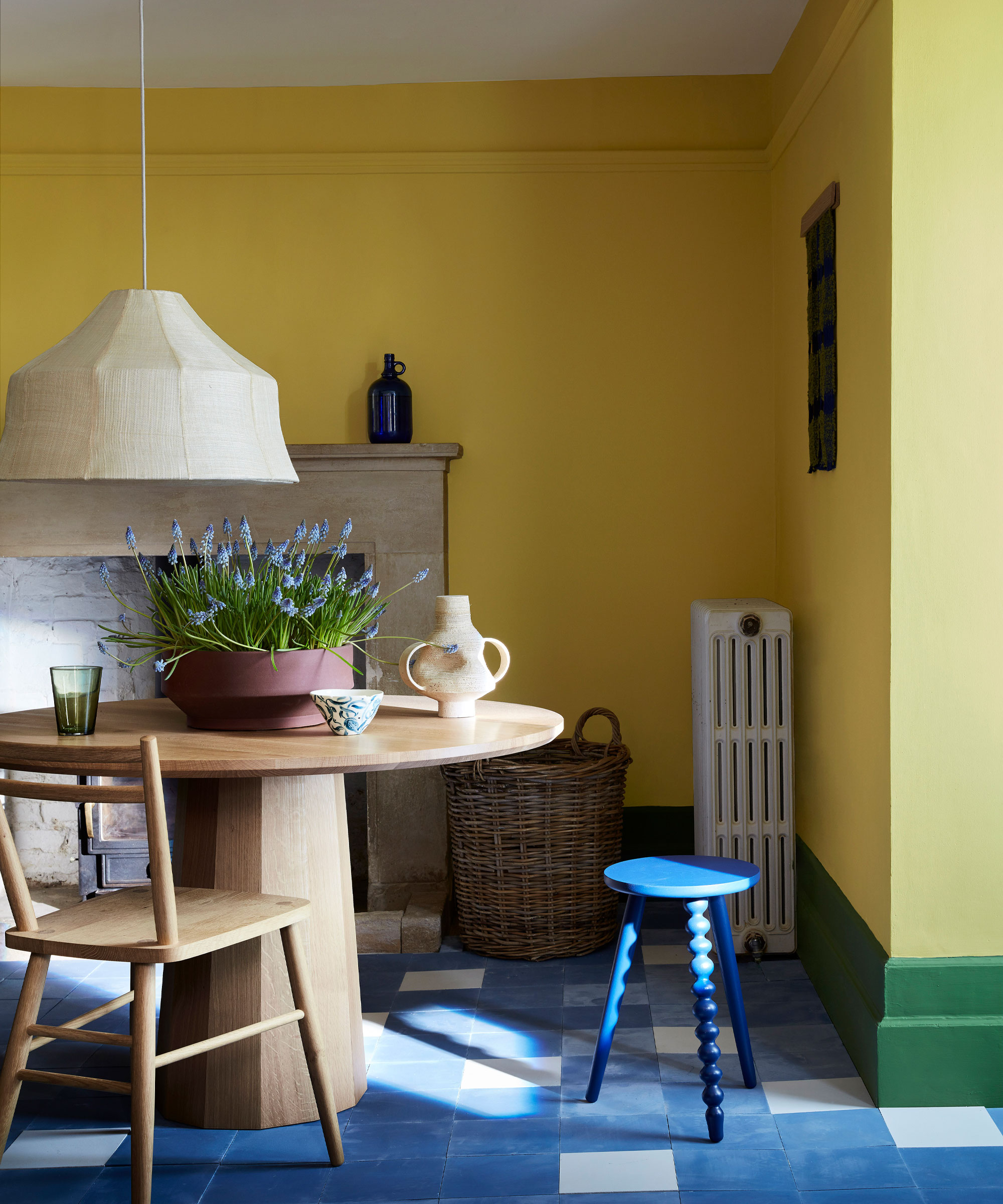
Flat paint is a popular choice for its velvety, matte finish, which is perfect for hiding imperfections in walls. Unfortunately, this paint is highly susceptible to imperfections.
Flat paint is one of the least durable paint finishes, so you may notice a few spots, scratches, and stains on walls. Knowing the right cleaning methods is essential for keeping your walls looking fresh and extending the longevity of your paint job.
It can be tricky to clean walls decorated with flat paint without damaging them because they are porous and can easily take up dirt and moisture. Luckily, our experts have explained the correct cleaning tips to follow to ensure your paintwork remains flawless.
How to clean flat paint walls
Before cleaning walls with flat paint, prepare the area by covering or removing any furniture or decor and laying drop cloths down to protect the floor from drips and spills.
What you'll need

- Microfiber cloths or a soft brush
- Vacuum with a brush attachment
- Mild dish soap or wall cleaner
- Bucket for mixing cleaning solution
- Clean water in a separate bucket or sink
- A soft sponge (optional)
- Ladder (if necessary)
1. Start by dusting the walls
The first step in cleaning walls with flat paint is to remove any loose dust and dirt.
Use a microfiber cloth, a soft-bristled brush or a vacuum cleaner with a brush attachment to gently remove any loose dust and cobwebs from the walls.
Start from the top and work your way down. This step is crucial as it prevents scratching the paint during cleaning.
2. Prepare your cleaning solution

In a bucket, mix warm water with a small amount of mild dish soap or a specialized wall cleaner, such as this natural wall cleaner for painted walls from Amazon.
Avoid using harsh chemicals, as they may damage the paint.
3. Test the cleaning solution
'Before cleaning the entire wall, it's important to perform a spot test in an inconspicuous area,' advises cleaning expert and operations manager at Spekless Cleaning, Karina Toner. 'This helps ensure that the cleaning solution does not cause any damage or discoloration to the flat paint.'
Choose a spot near the baseboard, in a corner, or somewhere your furniture normally covers. Dip a clean, soft cloth or sponge into the solution and wring it out until it is damp but not dripping. Then, test the solution on the wall. If it leaves a mark, you may need to dilute your cleaning solution more.
4. Clean from top to bottom

When cleaning walls with flat paint, it's important to always start at the bottom and work your way up. This will mean any drips or dirty water can be caught as you clean upwards, resulting in a cleaner finish.
'Dip a soft sponge or cloth into the cleaning solution, wring out any excess liquid, and gently wipe the walls in circular motions, making sure to cover every inch,' says Simeon Simeonov, a painting expert at Fantastic Services. 'Be careful not to scrub too hard, as this can remove the paint or leave streaks.'
5. Rinse with clean water
'After cleaning, rinse the walls with clean water to remove any soap residue,' advises Simeon Simeonov. 'Again, use a soft sponge or cloth dampened with water, and be sure to wring out any excess liquid to avoid saturating the walls.'
'If walls are saturated with water, excessive moisture can seep into the paint and cause it to peel or bubble,' explains Karina Toner.
6. Dry the walls

Once you have finished cleaning the walls, use a clean, dry cloth or towel to gently wipe away any excess water and pat the walls dry gently to prevent water spots from forming. Avoid rubbing, as this can cause streaking.
'Then, allow the walls to air dry naturally,' advises Karina Toner. 'Avoid using heat sources such as hair dryers, as they can cause the paint to blister.'
You can open windows and use fans or a dehumidifier to speed up the drying process and prevent mold or mildew growth.
7. Spot clean tougher stains
'If there are stubborn stains that won't come off with the mild detergent solution, you can try using a slightly stronger cleaning solution made of equal parts water and white vinegar,' recommends Simeon Simeonov. 'Apply the solution to the stain with a soft cloth and gently blot until the stain lifts. '
Avoid abrasive tools such as scrub brushes or scouring pads, even when dealing with tough stains, as they can scratch the paint and damage the finish. Repeating the cleaning process a few times is a safer solution to tackle stubborn stains.
Remember, prevention is key. To avoid potential damage to your flat-painted walls and reduce the need for deep cleaning, dust regularly and clean up spills and stains as soon as they happen. After cleaning, inspect the walls for areas where the paint may have been damaged or removed. If needed, touch up paint on walls periodically.







